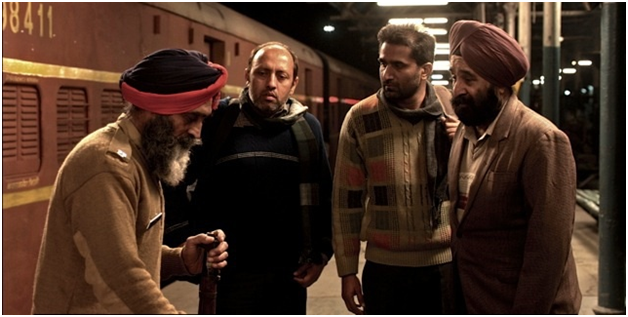Punjab Enters Cannes, With Soul and Angst
A still from Chauthi Koot

Gurvinder Singh with his second offering “Chauthi Koot” (following his impressive 2011 debut with “Anhe Ghore Da Daan”), creates a record in Cannes. In its 68 years of being, this is the first time that this august festival will be showcasing a Punjabi film, that too, in its second to competition section, and for many, the most key one, Un Certain Regard.
Gurvinder Singh talks to Uma da Cunha about his journey into the personal, probing and edgy artistry that marks his style of filmmaking.
Director Gurvinder Singh
I was not brought up in Punjab as people may think. I am Delhi-born and raised, belonging to the migrant Punjabi communities that moved there after Partition.
My initial interest – more like obsession - was in photography and painting. I read books on painting avidly, collected photographs, looked at acclaimed work from abroad: Cartier-Bresson, for instance.
It was when I studied Mass Communications at Pune University that I was introduced to films, watching them at the National Archives. I saw Luis Buñuel’s films there and his brilliant, crazed look at life was a revelation. I knew then that films too could reflect the artistry of photography.
I joined the Film and Television Institute in Pune and found the teaching standards frustrating even if we saw good cinema. But it is here that I got to work with my subsequent mentor, Mani Kaul. I had earlier read the book ‘Abhed Akash’, in Hindi, which contained a series of interviews with him by Udayan Bajpai. To imbibe its philosophical depth more thoroughly, I translated it into English. It took a year, during which I communicated with Mani Kaul on email.
In 1999, Mani Kaul asked me to be his teaching assistant at a four month FTII course he was conducting. There were just ten students. The way this great master approached each one as a distinct individual molded me as well. He told us that we should recognize and respect our duality; that it was our shortcomings that that made us different from one another; and he urged us to realize, understand and express our unique identity in our scripts and filming.
Three years in Mumbai followed but I found the city too claustrophobic, too noisy, too big. I moved to Pune. Now, after Cannes, I want to live in my cottage in Himachal Pradesh and commute to Pune when needed.
A still from Chauthi Koot
A still from Chauthi Kootunj
I came to imbibe the spirit and character of Punjab when I spent four years wandering at will in various areas of that region. Village to village, I lived with Dalits, traditional street and stage performers and folk singers. I saw the striking caste divisions. The low caste live in the periphery. There are two Gurdwaras, one for the high caste and one for the low. There is a silent boundary that demarcates and shapes the lives of the two. I made documentaries from this sojourn.
My scripts are shaped by literary work. “Chauthi Koot” is an amalgam of two short stories. My debut film was based on a novel. But I write my own scripts. I always use actors from Punjab, either theatre actors or new faces. They know and feel the language and the thinking. There are so many dialects in Punjab. An actor from Mumbai , however adept and trained, will never have that natural, familiar, visceral authenticity. The dialect in my new film is Majhi, spoken in the belt around Amritsar and Lahore.
My first film “Anhe Ghore Da Daan” (Alms for a Blind Horse) was funded by NFDC. It concerns the displacement of Dalits in rural Punjab when a landlord comes to usurp their land for industry. I plunged into making it, instinctively, and to my way of thinking. What interests me is images and sound and how the two integrate. The film released commercially for a week in Mumbai, Delhi, Ludhiana and Jalandhar. People still see it – in pirated versions.
My second film “Chauthi Koot” is set in the post 1984 Blue Star operation years. It is fifty percent funded by NFDC, with Sunil Doshi contributing as well. The rest is from European backing. It was hard getting it though, in spite of the film winning the Paris Project award at the 10th Hong Kong Film festival.
My scripts are spare, not more than 30 pages as against the usual 100 or more. Funders back off thinking there isn’t enough meat in the story. But filming lies in elaborating and visualizing reality. A brief paragraph in a film can make for a 15-minute compelling scene. I improvise all the time seeing the place and space where I am shooting. I ask my actors to forget written lines and express what they feel.
However the support and guidance from my European backers was a boon. They never interfered with my writing or my filming. I benefited with Olivia Stewart being my script mentor and Catherine Dussart selflessly nurturing the film’s promotion. I was able to handle my sound quality (for me a scene works only when the sound is right) in Paris working with the highly regarded re-recording mixer, Bruno Tarriere.
My next film is also in Punjabi on a renowned Qawali singer. After that, I may perhaps look beyond Punjab.



